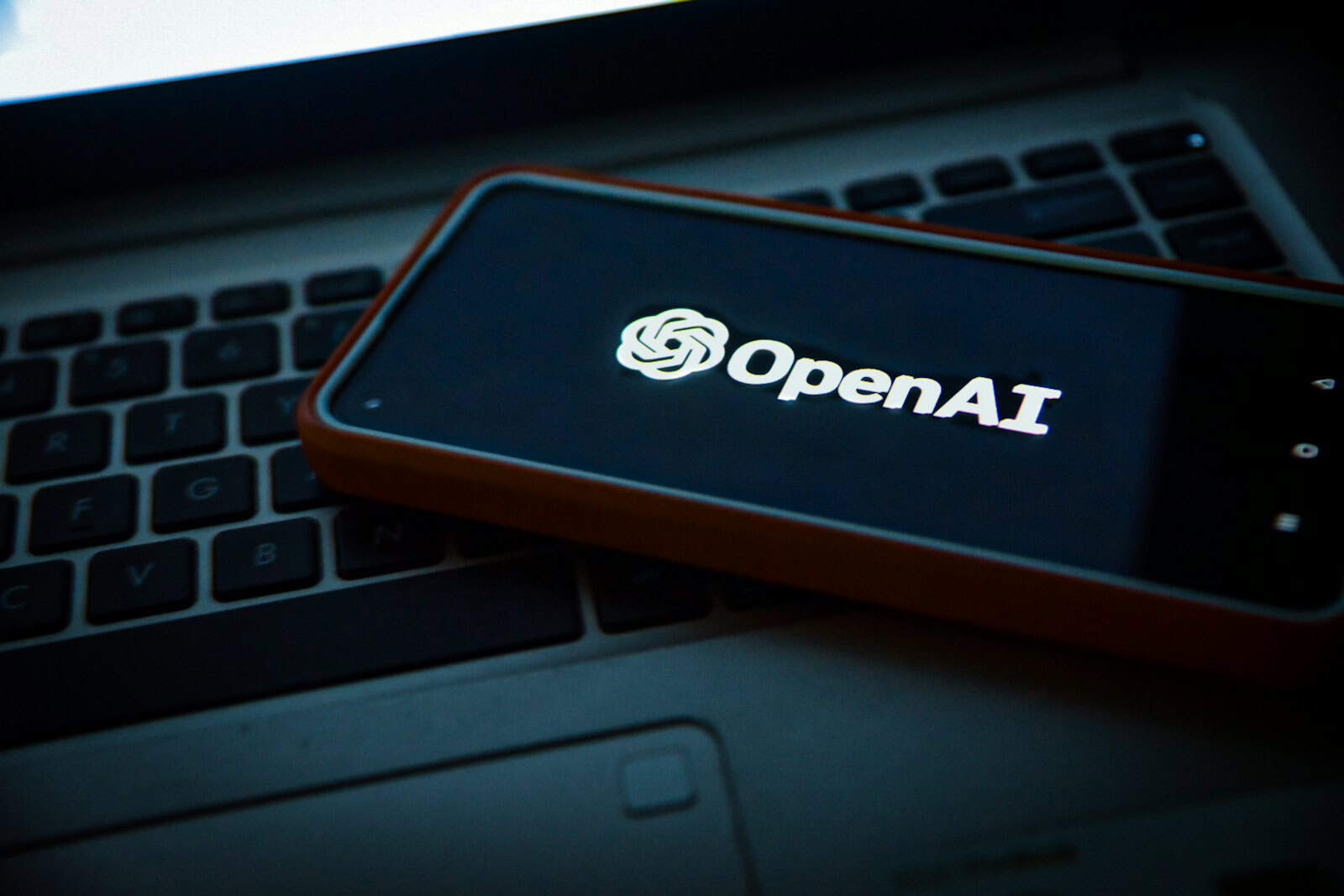Sam Altman has given the world its first real glimpse into one of the most ambitious AI infrastructure projects ever conceived: Stargate 1, a next-generation AI supercenter rising in Abilene, Texas. The OpenAI CEO recently posted footage showing the early construction of this vast facility—an important milestone for a project that could reshape the global AI landscape and position the United States at the epicenter of artificial general intelligence (AGI) development.
But Stargate 1 isn’t just another data center. It’s part of a proposed $500 billion initiative involving a coalition of tech heavyweights including OpenAI, Microsoft, SoftBank, Oracle, and the startup fund MGX. The goal? To build the world’s most powerful AI computing infrastructure—capable of supporting future AI models orders of magnitude more complex than anything available today.
OpenAI’s $500 Billion AI Supercenter Begins to Take Shape in Texas
A Glimpse Into the Future of AI Infrastructure
Stargate 1 is the first of what could become several massive AI campuses across the U.S., as part of OpenAI’s strategy to dramatically scale up compute availability. The Abilene site is expected to house tens of thousands of GPUs, potentially NVIDIA H100 or B100-class accelerators, optimized for training cutting-edge neural networks. Industry insiders estimate the facility could consume over 1 GW of power, putting it in the same league as major industrial operations and hyperscale cloud campuses.
Altman’s recent video shows steel framework rising from the Texas soil—symbolizing the start of a project meant to fuel not only ChatGPT successors but the infrastructure behind emerging AI models designed for science, healthcare, finance, defense, and global logistics.
Why Texas?
Texas was chosen for a combination of reasons: abundant land, relatively cheap energy, favorable state policies for tech investment, and a growing workforce familiar with infrastructure-scale projects. Additionally, the location allows for easier access to renewable energy, helping OpenAI pursue long-term sustainability goals—a key consideration as data center energy consumption becomes a growing concern worldwide.
The city of Abilene itself stands to benefit economically from the Stargate project. Local officials have signaled strong support, anticipating a wave of new jobs and a potential reindustrialization boom centered around AI and advanced computing.
A Response to Global AI Arms Race
Stargate 1 is also a response to increasing global competition in AI development, particularly from China. OpenAI and its partners appear to be creating a secure, domestically controlled infrastructure backbone that allows American firms to stay ahead in the race to AGI. Altman has publicly stated that the compute needed for next-generation models will “make today’s look like a rounding error,” underscoring the urgency of building facilities like Stargate.
From “Please and Thank You” to Multimodal Superintelligence
In a recent interview, Altman noted that even teaching models simple etiquette—like responding politely to “please” or “thank you”—can cost tens of millions of dollars in compute. That fact alone highlights the staggering scale of resources required for nuanced human-like AI interactions.
With Stargate 1, OpenAI is laying the groundwork to go far beyond such features. The facility will likely support the development of multimodal AI, capable of understanding images, video, audio, and eventually physical environments—all within a unified model architecture. These models are expected to power everything from robotics and augmented reality assistants to AI-driven scientific discovery engines.
What’s Next?
While Altman’s post only shows the earliest stages of construction, the implications are massive. Stargate 1 could become the most advanced AI infrastructure site in the world—and just the first in a series of facilities designed to keep OpenAI at the forefront of AGI.
The buzz surrounding this development has also reignited debate within the tech world. Elon Musk, for instance, questioned the feasibility and transparency of the project, prompting Altman to clap back with visual proof: “Big, beautiful buildings,” he wrote.
This is just the beginning. Stargate 1 isn’t just a data center—it’s the foundation of a bold bet on the future of intelligence itself.
Key Takeaways
- Sam Altman has released the first video showing the massive scale of the Stargate 1 AI supercenter being constructed in Texas.
- The new facility represents a major expansion of OpenAI’s computing infrastructure needed to develop more advanced AI systems.
- Creating even basic AI responses requires enormous computing resources, highlighting why such large facilities are necessary for future AI development.
Sam Altman Unveils “Stargate 1” AI Supercenter in Texas
OpenAI CEO Sam Altman recently shared the first video glimpse of the company’s massive new AI computing facility in Texas. The scale of this project signals a major advancement in AI infrastructure development in the United States.
Overview of the “Stargate 1” Project
Stargate 1 represents one of the most ambitious AI computing projects ever undertaken. The Texas-based facility is designed to dramatically increase OpenAI’s computational capacity, enabling more complex AI model training and development.
The project was announced earlier this year as part of OpenAI’s strategy to build next-generation AI infrastructure. Construction appears to be moving quickly, with Altman’s video showing the impressive scale of the site.
The facility spans several acres and will house thousands of specialized AI chips and computing units. When completed, it will become one of the world’s largest dedicated AI computing centers.
The name “Stargate” suggests its role as a portal to new AI capabilities and technologies that weren’t previously possible at scale.
Key Features and Innovations
Stargate 1 incorporates cutting-edge cooling systems essential for managing the immense heat generated by thousands of AI processors working simultaneously. The facility uses advanced power distribution networks to support the enormous energy requirements of large-scale AI training.
The computing architecture features custom-designed racks optimized for machine learning operations. These specialized setups allow for faster data processing and more efficient model training compared to conventional data centers.
Key innovations include:
- Custom-built AI chip configurations
- Energy-efficient computing designs
- Advanced networking infrastructure for rapid data movement
- Modular construction for future expansion
The center will likely use the latest GPUs and possibly custom silicon designed specifically for OpenAI’s needs, enabling future AI models that surpass GPT-4’s capabilities.
Strategic Importance for the U.S. AI Sector
Stargate 1 strengthens America’s position in the global AI race, particularly against competitors like China that are investing heavily in AI infrastructure. The facility helps address the computing bottleneck that has limited AI development, allowing for training larger and more capable models.
This investment creates numerous high-skilled jobs in Texas and fosters a tech ecosystem around the facility. Local universities and businesses will likely benefit from partnerships and proximity to this cutting-edge research center.
The project represents a significant capital investment in domestic AI infrastructure at a time when computing resources are increasingly seen as strategic assets. It aligns with broader U.S. efforts to maintain leadership in advanced technologies.
For OpenAI, Stargate 1 provides greater independence and control over its computing resources, reducing reliance on third-party cloud providers.
Technological Impact and Future Prospects
The Stargate 1 AI Supercenter represents a significant leap forward in computing infrastructure. Its advanced capabilities will reshape multiple technological domains while creating new opportunities for research and economic growth.
Anticipated Influence on Artificial Intelligence Development
Stargate 1 features computing power that far exceeds current standards, allowing for training larger AI models with greater efficiency. The facility houses next-generation processors specifically designed for AI workloads, reducing training time from months to days for complex models.
According to industry experts, the computational capacity at Stargate 1 could accelerate breakthroughs in several key areas:
- Natural language understanding: More nuanced comprehension of human communication
- Computer vision: Enhanced ability to interpret and analyze visual data
- Multimodal AI: Improved systems that combine different types of inputs
The center will also tackle current AI limitations, with dedicated research teams focusing on reducing algorithmic bias and improving energy efficiency. These improvements could help make advanced AI more accessible to smaller organizations that lack massive computing resources.
Partnerships and Industry Collaborations
Stargate 1 has already secured partnerships with leading technology firms and research institutions. These collaborations aim to maximize the facility’s impact across various sectors.
Key partnerships include:
| Partner | Focus Area |
|---|---|
| University of Texas | AI ethics and governance research |
| Texas Medical Center | Healthcare AI applications |
| Energy companies | Climate modeling and sustainable energy |
The facility has created an open research initiative that allows smaller companies to access computing resources through a grant program. This approach helps democratize access to advanced AI tools.
Sam Altman emphasized that Stargate 1 will maintain an open approach to knowledge sharing. “We want breakthroughs made here to benefit the broader AI community, not just our company,” he stated at the facility’s introduction.
Implications for Local Communities in Texas
The supercenter has already created over 500 direct jobs in the region, with roles ranging from technical positions to facility management.
Local economic analysts project the facility will generate approximately 1,500 additional indirect jobs through support services and increased economic activity. Average salaries for technical roles at Stargate 1 exceed typical wages in the area by 35%.
Beyond employment, the facility includes programs designed to benefit the surrounding community:
- Educational partnerships with local schools to improve STEM education
- A technology incubator for local startups
- Infrastructure improvements including enhanced power grid capacity
The center will also implement water conservation measures to minimize environmental impact, addressing concerns from environmental groups about resource usage. Community leaders have generally welcomed the development, citing long-term economic benefits for a region traditionally dependent on oil and gas industries.
Frequently Asked Questions
Many people have questions about the new Stargate 1 AI Supercenter in Texas. This project aims to change how AI systems are developed and used across various industries.
What is the purpose of the ‘Stargate 1’ AI Supercenter?
The Stargate 1 AI Supercenter will serve as a hub for advanced artificial intelligence research and development. It brings together computing resources, research teams, and industry partners under one roof.
The center focuses on creating faster, more efficient AI systems that can handle complex tasks. It also aims to make AI technology more accessible to businesses of all sizes.
How will the ‘Stargate 1’ AI Supercenter impact the tech industry in Texas?
The Stargate 1 facility is expected to create thousands of new tech jobs in Texas. This includes positions for AI researchers, engineers, and support staff.
The center will likely attract other tech companies to the area, creating a cluster effect. Local universities will benefit from research partnerships and internship opportunities for students.
Tax revenue from the facility will support local infrastructure improvements. This could help Texas become a leading center for AI innovation in the United States.
What technologies will be employed within the ‘Stargate 1’ AI Supercenter?
The facility houses next-generation supercomputing systems designed specifically for AI workloads. These systems use custom processors that can train large AI models more efficiently.
Advanced cooling technologies help manage the heat produced by these powerful computers. The center also utilizes renewable energy sources to reduce its environmental impact.
Specialized network infrastructure allows for rapid data transfer between systems. This helps researchers collaborate and share results more effectively.
Can you detail the collaborations or partnerships involved in the creation of the ‘Stargate 1’ AI Supercenter?
Several major tech companies have joined forces with Altman’s team to bring Stargate 1 to life. These partnerships include hardware manufacturers who provide specialized computing equipment.
Texas state government offered incentives to help secure the project location. Local universities have established research agreements to give their students and faculty access to the facility.
Energy companies have partnered to ensure stable power supply for the center’s extensive computing needs. This includes agreements with renewable energy providers.
What are the expected outcomes of establishing the ‘Stargate 1’ AI Supercenter for AI research?
The center aims to develop more powerful AI models that can solve complex problems in science and medicine. These advancements could lead to breakthroughs in drug discovery and climate modeling.
Researchers hope to improve AI efficiency, making systems that require less computing power and energy. This could make advanced AI more accessible and affordable for smaller organizations.
The facility will serve as a testing ground for new AI applications across various industries. Results from this research will be published to benefit the wider scientific community.
How does the ‘Stargate 1’ AI Supercenter aim to address privacy and ethical concerns in AI?
The center has established a dedicated ethics board to review all research projects. This helps ensure that AI systems are developed with human well-being as a priority.
Privacy protections are built into the research protocols used at the facility. All data used for AI training undergoes rigorous anonymization processes.
Transparency is a core value, with regular public reports on the center’s activities and findings. The facility also hosts community forums to address concerns from local residents and advocacy groups.







